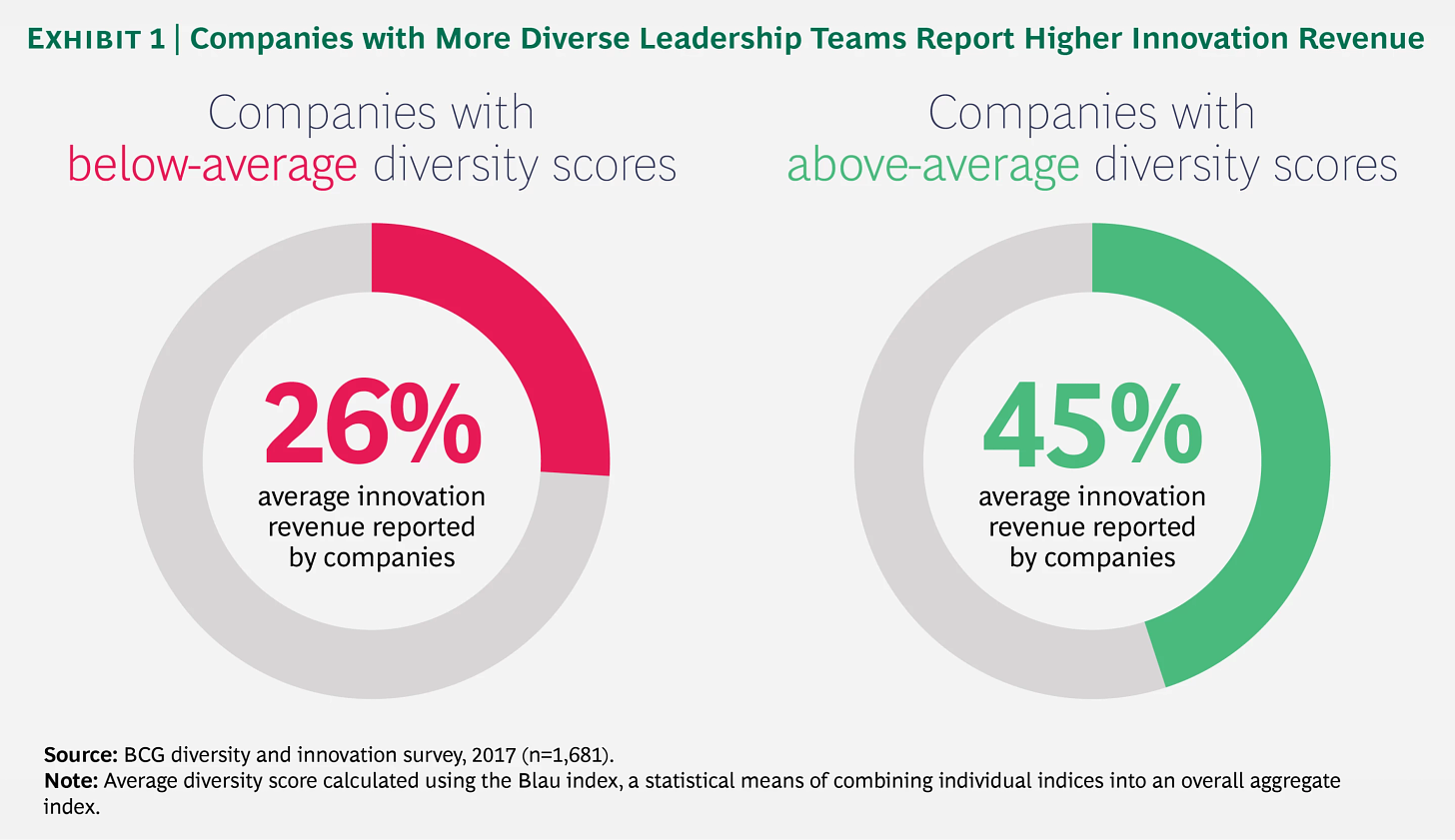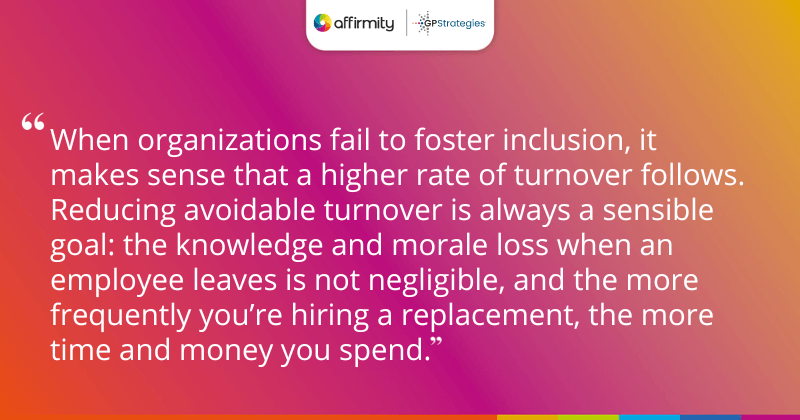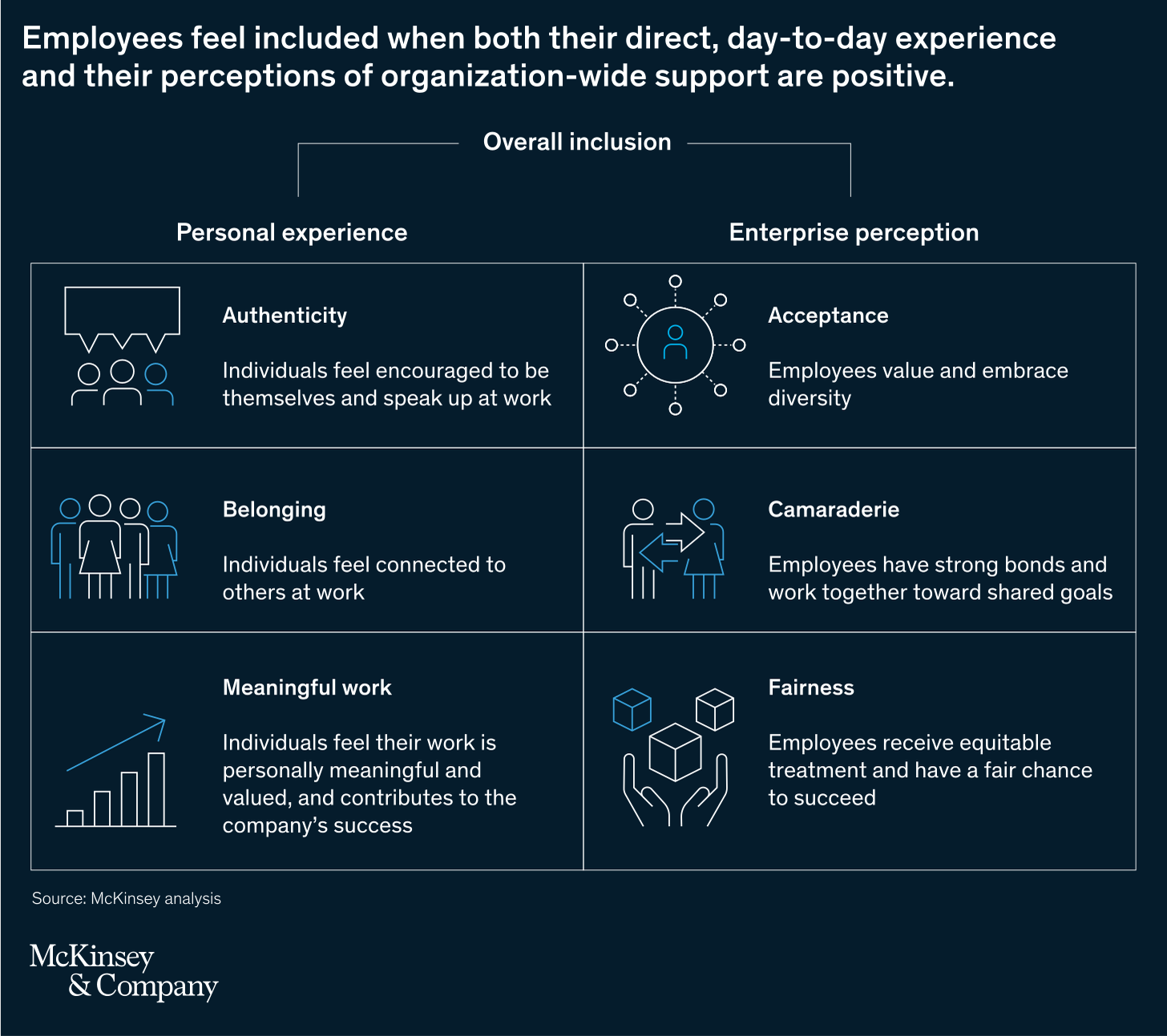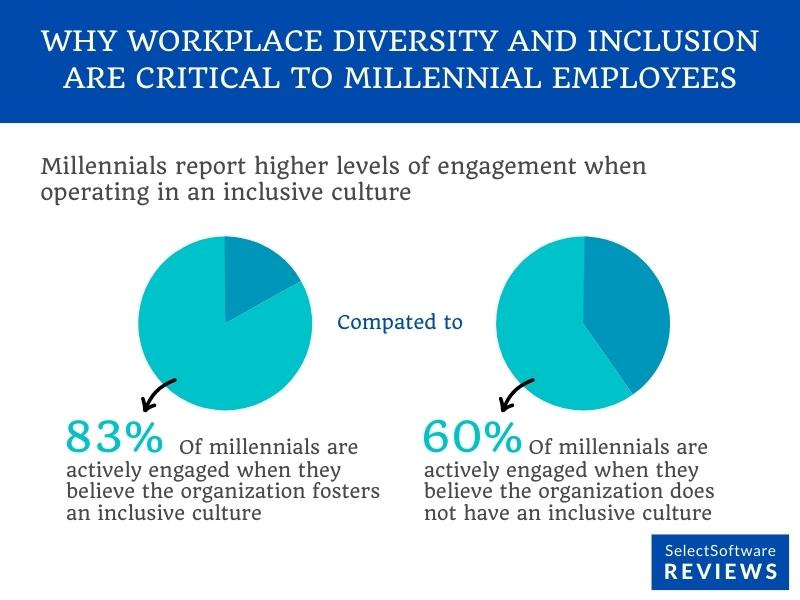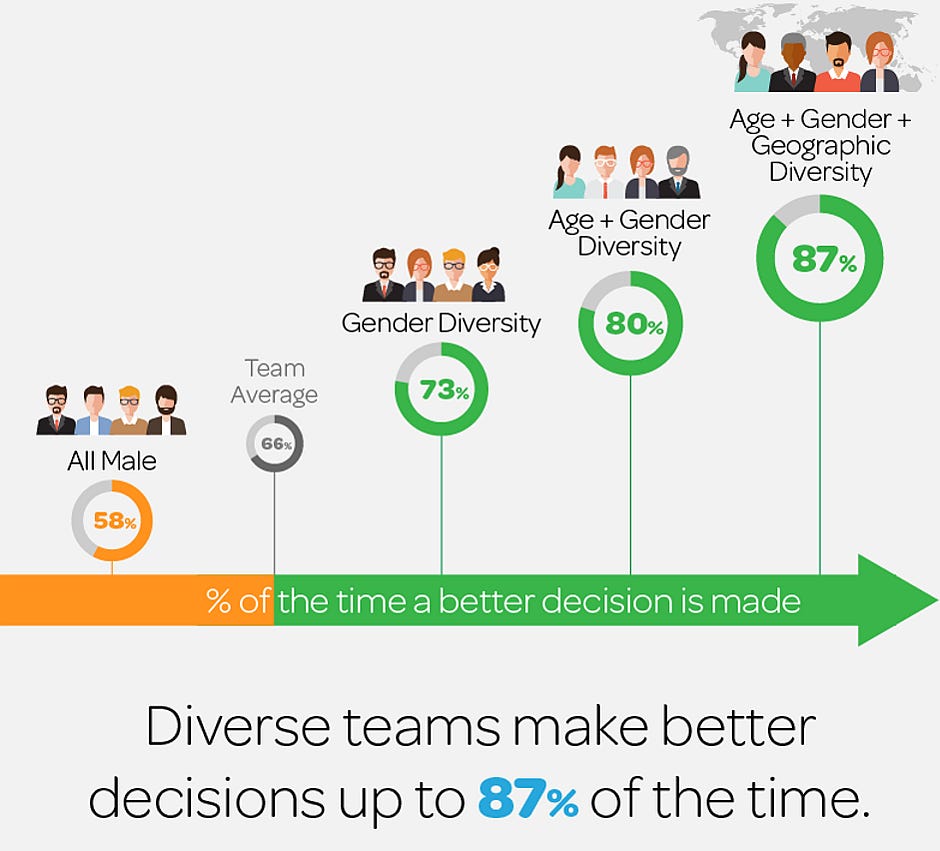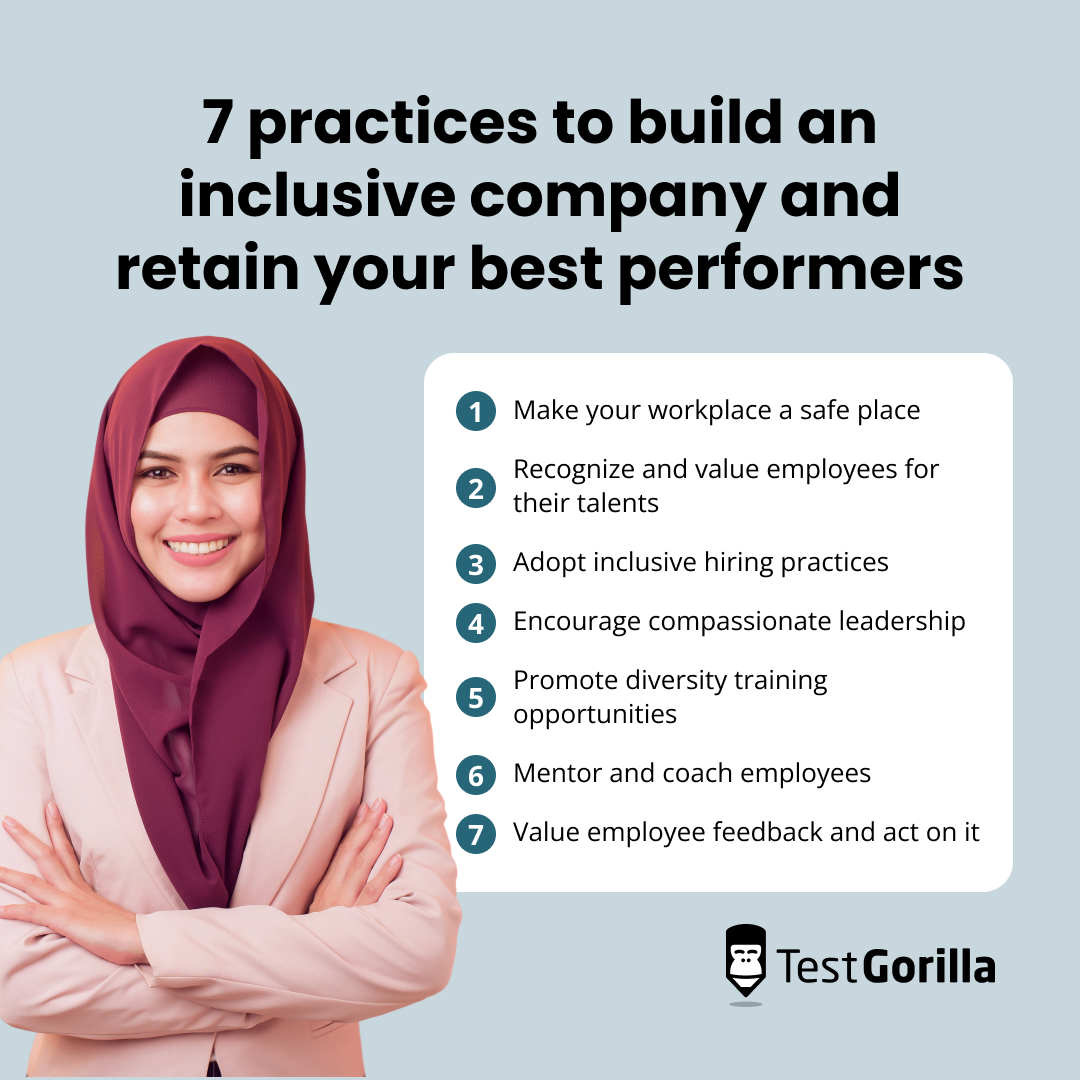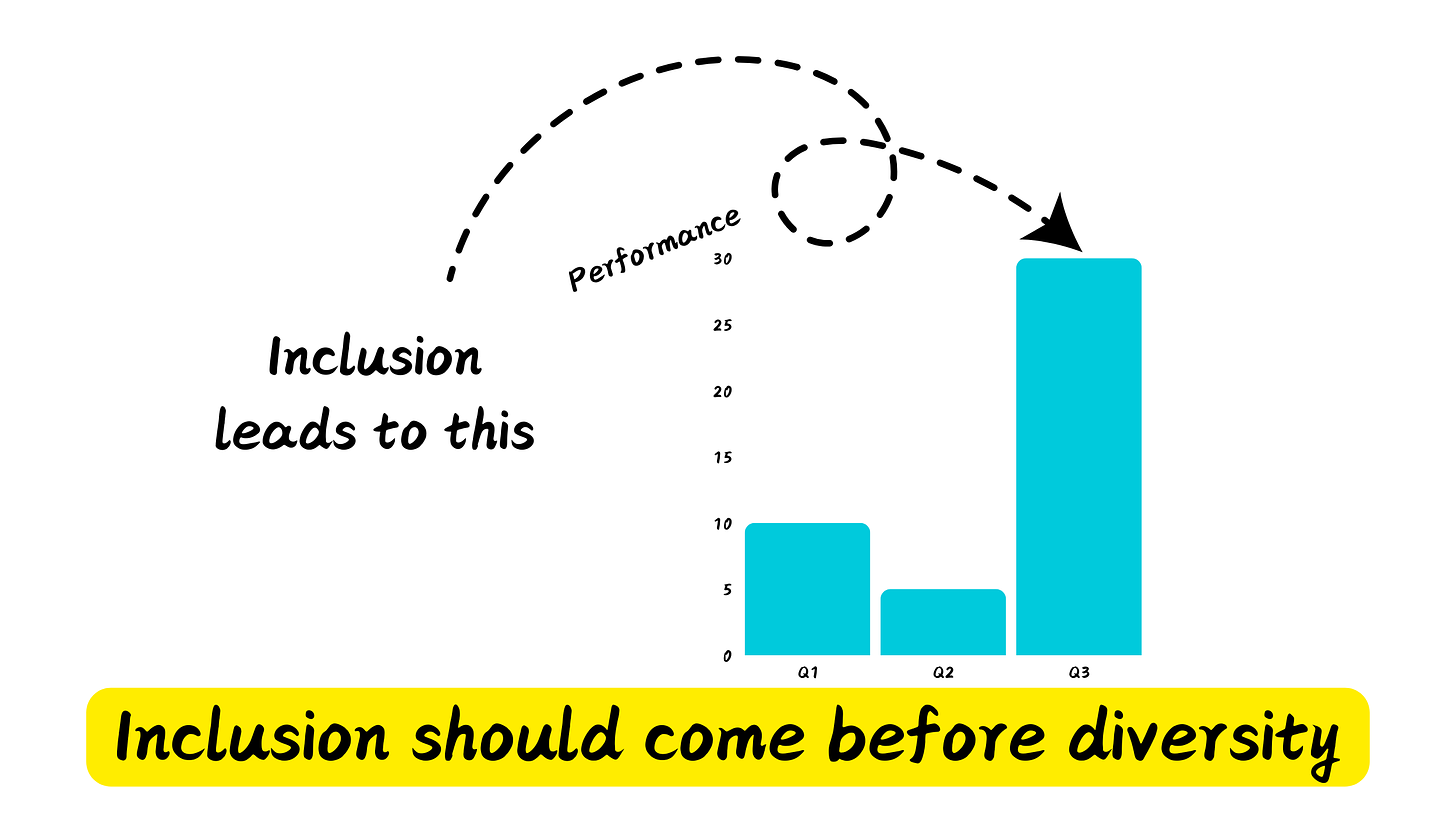Inclusion should come before diversity (DEI)
Create an inclusive culture as the foundation for diverse teams
If you’ve been working in tech for long enough, you’ve probably heard of the acronym “DEI”; Diversity, Equity, and Inclusion.
It’s been a focus for great companies, and for good reason. Studies show that diverse teams drive innovation, creativity, and profits.
This is nothing new or groundbreaking, the stats below are from a study done by BCG in 2017.
Yet, in many organizations, the DEI initiatives feel forced and superficial.
Why? Because too often, diversity is prioritized without establishing the inclusion needed to make that diversity meaningful.
Inclusion is more than bringing people together. The real meaning of it is to create a space where every person feels valued, safe, and able to share ideas openly.
When companies understand this and place inclusion before diversity, they set the stage for impactful, lasting change.
In this article, I share my thoughts on why inclusion should come first in DEI, how to create an inclusive culture, and the benefits it brings for both individuals and organizations.
Consider supporting my work and subscribing to this newsletter.
As a free subscriber, you get:
✉️ 1 post per week
🧑🎓 Access to the Engineering Manager Masterclass
As a paid subscriber, you get:
🔒 1 chapter each week from the book I am writing “The Engineering Manager’s Playbook”
🔒 50 Engineering Manager templates and playbooks (worth $79)
🔒 The complete archive
1. Why Inclusion First Matters
Imagine bringing a wide range of people into a room, each with different backgrounds, experiences, and perspectives.
Without an inclusive environment, how likely are they to share their thoughts openly when discussing a challenging topic? To feel they can do so and be their whole self without being judged.
Chances are, many will hold back. A natural sense of fear will appear and the conversation will stay at surface levels.
In that scenario, diversity becomes a checkbox exercise, rather than a true asset.
My opinion is that inclusion needs to come first because it creates an environment where diversity can join and shine.
An inclusive workplace sets norms that value respect, empathy, and collaboration.
When people know they’re genuinely welcomed, they feel empowered to express their ideas, even if they differ from the norm. For engineering teams, this is critical to foster problem-solving and innovation, as every member’s perspective should be welcomed.
2. Steps to Build an Inclusive Culture
Establishing inclusion first requires intentional, continuous actions from leadership. Here are practical steps to cultivate inclusion within your team or organization:
a) Create Psychological Safety
Harvard Professor Amy Edmondson’s concept of “psychological safety” is a key element of inclusion.
This safety is the belief that no one will be punished or humiliated for sharing ideas, questions, or mistakes.
Leaders can foster psychological safety by encouraging questions, supporting those who speak up, and acknowledging that mistakes are part of the learning process.
b) Seek Input and Feedback Proactively
Creating a culture of feedback ensures that everyone feels they can contribute to decision-making.
While anonymous surveys and regular check-ins are a start, having open conversations where team members see their input leading to real change is even more impactful.
Leaders need to actively listen and implement changes based on feedback, showing that voices matter.
c) Address Unconscious Biases and Microaggressions
Creating an inclusive space means addressing the subtleties of people dynamics, like unconscious biases and microaggressions, which can weaken trust.
Companies should provide training to help employees recognize these biases and create norms around inclusive language and behaviours.
3. How Diversity Can Flourish in an Inclusive Culture
When inclusion is in place, diversity initiatives transform from a numbers game to a true strength.
Teams that feel inclusive are better able to attract diverse talent because they offer something more than surface-level diversity; they offer belonging.
This attracts skilled people from various backgrounds who know their contributions will be valued.
Additionally, inclusive teams tend to have higher retention. People stay where they feel they’re contributing meaningfully and are part of a positive, supportive environment.
As a result, inclusive organizations become naturally more diverse as they attract and retain a wider range of talent over time.
4. The Tangible Benefits of Leading with Inclusion
Inclusion-first cultures see measurable outcomes. They create higher engagement, lower turnover, and increased innovation.
Employees in such environments are also more likely to contribute discretionary effort, the “extra” that pushes projects from good to great.
a) Boosted Engagement
Engagement is directly tied to feeling valued.
83% of millennials claim they’re actively engaged when they believe the organization fosters an inclusive culture. In contrast, only 60% of millennials are actively engaged when they believe the organization does not have an inclusive culture.
b) Higher Quality and More Innovative Solutions
An inclusive environment taps into the full potential of a diverse team’s ideas and expertise. With everyone feeling safe to speak up, solutions are more holistic and creative.
Engineering teams often deal with complex problems where innovation is critical, and inclusion-first cultures maximize the diverse problem-solving approaches each team member can bring.
c) Decreased Turnover and Improved Retention
One report found that 66% of employees would quit if they felt unappreciated at work. This number jumps to 76% with millennial workers, who encompass more than a third of the workforce.
As companies face high turnover costs, prioritizing inclusion can pay off in major savings. Furthermore, retention helps teams maintain consistency, which is crucial for long-term projects and customer trust.
TL;DR
Inclusion builds the foundation for diversity to thrive by fostering a space where all voices are valued.
Focus on psychological safety to encourage open communication and creativity.
Address biases and microaggressions proactively, creating an environment of respect.
Inclusion boosts engagement, innovation, and retention, driving tangible business outcomes.
Lead with inclusion to attract and retain diverse talent, creating a resilient, high-performing team.
Useful links
👨💻 Become a better Software Engineer with CodeCrafters (use my partner link to get 40% off and build your own Redis, Git, Kafka and more from scratch).
🎯 Book a mock interview with me (System design or Behavioural & Leadership) to smash your next real interview!
👋 Let’s connect on LinkedIn!




